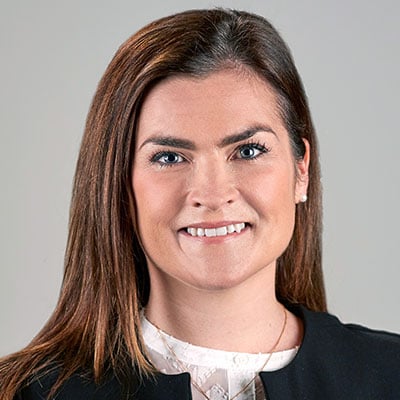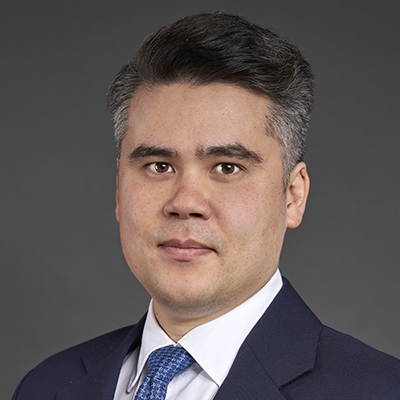AIFMD II Q&A for Fund Sponsors
The final text of the EU’s Alternative Investment Fund Managers Directive II (AIFMD II) was published on 26 March 2024. We are still awaiting detailed ‘technical standards’ and guidelines on some aspects of AIFMD II. Nevertheless, the final text clarifies some key points of interpretation, especially in relation to timing and transitional provisions, which were less clearly stated in the near-final text. This Q&A is intended to answer at a high level some frequently asked questions posed by fund sponsors on AIFMD II and how it may be relevant to them.
By way of reminder, the original Alternative Investment Fund Managers Directive (AIFMD) entered into force over a decade ago. AIFMD provides the overall legislative framework for managing and marketing alternative investment funds in the EU.1 AIFMD II is designed to update AIFMD.
AIFMD II will predominantly affect funds managed by EU managers, which are referred to in the legislation as EU ‘alternative investment fund managers’ or ‘AIFMs’, and which we have referred to in this Q&A as ‘EU managers’. However, as set out in the Q&A under ‘Will AIFMD II apply to sponsors based outside the EU?’, some aspects are likely to be relevant to non-EU sponsors too.
AIFMD II has some relatively detailed provisions with significant nuances in respect of how they will apply to particular sponsors, strategies, and fund structures. In addition, some issues remain unresolved, not least because the EU has not yet issued detailed technical standards. As such, do contact your usual Kirkland & Ellis contact if you wish to discuss how AIFMD II may specifically affect you and your funds.
1. Application and scope
Who will be affected by AIFMD II?
Will AIFMD II apply to sponsors based outside the EU?
Is AIFMD II being implemented in the UK or Switzerland?
2. Timing
When will AIFMD II become effective?
3. Disclosure and reporting
Will AIFMD II require additional reporting to regulators?
Will more information need to be provided to investors?
4. Ban on marketing for jurisdictions on EU AML / tax blacklists
Will AIFMD II affect the ability of non-EU sponsors / funds to market in the EU?
5. Delegation and substance
6. Loan origination
How will AIFMD II affect loan origination by funds?
What is the difference between a fund that originates loans and a ‘loan-originating fund’?
What is the loan origination ‘passport’?
Are shareholder loans in scope of the new loan origination rules?
Are there any investor reporting or regulatory disclosure requirements for funds originating loans?
Will I need to implement new policies if I sponsor a fund that originates loans?
Can a fund managed by an EU manager lend to related entities?
Are there any restrictions on a fund lending to financial services firms or to other funds?
Can a loan made by a fund managed by an EU manager be transferred on the secondary market?
Will the proceeds of loans need to be attributed to the fund?
Will AIFMD II restrict the use of leverage?
What will be the new requirements for an open-ended loan-originating fund managed by an EU manager?
7. Retail Investors
Does AIFMD II impose any restrictions in relation to offering funds to retail investors?
8. ESG
Does AIFMD II contain an ESG element?
9. Fund Names
Will AIFMD II affect the naming of funds?
1. Application and scope
Who will be affected by AIFMD II?
Answer
AIFMD II will affect:
- EU managers;
- non-EU sponsors with a fund with an ‘EU sleeve’ (i.e., a fund vehicle domiciled in the EU managed by an EU manager); and
- non-EU sponsors which market their funds in the EU.
A bit more detail
AIFMD II will apply directly to EU managers.
AIFMD II will affect non-EU sponsors of funds where a sleeve of the fund is managed by an EU manager — such EU managers may be part of the sponsor’s group or alternatively a third party. The most significant impact is likely to be on funds that engage in lending activity and, in particular, credit funds — see the section on ‘Loan origination’ below.
The scale of the impact of AIFMD II on non-EU sponsors that merely market their funds in the EU is still being determined and may vary between EU Member States — see ‘Will AIFMD II apply to sponsors based outside the EU?’ below.
Will AIFMD II apply to sponsors based outside the EU?
Answer
Yes, for example, where a sponsor registers a fund to be marketed in an EU Member State or where the fund has an ‘EU sleeve’. However, the extent to which AIFMD II will apply to sponsors domiciled outside the EU is currently unclear.
A bit more detail
In general, AIFMD II will apply predominantly to EU managers authorised in EU Member States.
Some features of AIFMD II will apply to US, UK and other non-EU sponsors that market funds to investors in the EU. These features include reporting and disclosure requirements and a marketing ban for sponsors and their funds domiciled in certain blacklisted non-EU jurisdictions — see ‘Will AIFMD II affect the ability of non-EU sponsors / funds to market in the EU?’ below.
In addition to the above, individual EU Member States may also choose to go further by ‘goldplating’ requirements by applying them to non-EU sponsors that register funds to be marketed in their jurisdiction.
For non-EU sponsors whose funds include an ‘EU sleeve’ (i.e., a fund vehicle domiciled in the EU and managed by an EU manager), that ‘EU sleeve’ will clearly be in scope of the new requirements. In turn this may have implications for the wider fund.
Is AIFMD II being implemented in the UK or Switzerland?
Answer
No.
A bit more detail
The UK withdrew from the EU in 2020 and is not a Member State of the EU. AIFMD II is an EU initiative, and the UK Government has not given any indication that it intends to implement AIFMD II in UK law.
Switzerland is also not a Member State of the EU, and so will not implement AIFMD II.
Consequently, AIFMD II will apply to UK and Swiss sponsors in the same way as other non-EU sponsors (for example, US sponsors).
2. Timing
When will AIFMD II become effective?
Answer
Most provisions in AIFMD II will likely apply from 16 April 2026. However, new regulatory reporting requirements (also known as ‘Annex IV’ reporting) will likely apply only from 16 April 2027.
A bit more detail
The text of AIFMD II was officially published on 26 March 2024, but the legislation will not become effective until it is implemented by individual EU Member States. EU Member States are required to apply most of the provisions in AIFMD II from 16 April 2026. However, the new rules on regulatory reporting (sometimes called ‘Annex IV’ reporting) will not need to be implemented by EU Member States until 16 April 2027 — see ‘Will AIFMD II require additional reporting to regulators?’ below.
Transitional provisions may be available for funds managed by EU managers that originate loans. The final text of AIFMD II has clarified some of the transitional provisions that cross-refer to certain metrics (e.g., leverage and exposures) which are measured by reference to 15 April 2024. It is helpful to bear this in mind when considering how the transitional measures will apply to particular structures — see ‘Are there any transitional measures in relation to loan origination by funds managed by an EU manager?’ below.
3. Disclosure and reporting
Will AIFMD II require additional reporting to regulators?
Answer
Yes.
A bit more detail
AIFMD II requires more extensive information to be submitted to regulators by EU managers and non-EU sponsors that market funds in the EU, including in relation to:
- delegation arrangements (e.g., where an EU manager appoints a UK or US sponsor to manage the portfolio of an EU fund or sleeve);
- the fund’s investment activities; and
- the fund’s use of leverage.
Will more information need to be provided to investors?
Answer
Yes. This includes disclosures in the ‘pre-commitment’ stage (which is unlikely to impact funds existing today) as well as periodic reporting to investors.
A bit more detail
AIFMD II will require increased disclosure and reporting to investors by EU managers and non-EU sponsors that market funds in the EU, including regarding fees, charges and expenses that are directly borne by investors.
4. Ban on marketing for jurisdictions on EU AML / tax blacklists
Will AIFMD II affect the ability of non-EU sponsors / funds to market in the EU?
Answer
Possibly, depending upon where the sponsor and/or fund is domiciled.
A bit more detail
At present, sponsors and funds are banned from marketing in the EU if they are based in a country on the list of high-risk jurisdictions identified by the Financial Action Task Force (“FATF”); this currently comprises Iran, Myanmar and North Korea.
AIFMD II will extend the prohibition to sponsors and funds from a longer list of jurisdictions that have been blacklisted by the EU for anti-money laundering or tax purposes, or that do not have arrangements for the exchange of tax information with the EU. This could potentially exclude sponsors or funds from some offshore jurisdictions in the future.
For reference, sponsors and funds domiciled in the Cayman Islands were potentially going to be subject to this prohibition. However, the Cayman Islands have recently been removed from the relevant EU anti-money laundering ‘blacklist’. While this is no longer an immediate issue, it should be monitored.
The EU’s blacklists for the purposes of anti-money laundering and tax are revised on a regular basis. Please contact Kirkland & Ellis if you would like to discuss which jurisdictions are currently blacklisted.
5. Delegation and substance
How will AIFMD II affect delegation arrangements — for example, where a non-EU sponsor performs functions for a fund managed by an EU manager on a delegated basis?
Answer
AIFMD already includes a number of requirements where an EU manager delegates functions to a non-EU sponsor. AIFMD II will increase the requirements applying to such delegation arrangements. As such, non-EU sponsors are likely to see more information being requested by the EU manager so the EU manager can, in turn, pass the information on to its regulator.
A bit more detail
Current AIFMD rules on delegation have a particular focus on investment / portfolio management. AIFMD II will apply the detailed rules on delegation to a wider range of functions, such as fund administration, marketing, activities related to the assets of a fund (e.g., administering fund assets) and loan origination. In practice, this means EU managers will need to have more oversight of sponsors to which they delegate such tasks. We expect EU managers will apply such oversight when initially onboarding the delegate and on an ongoing basis.
Does AIFMD II impose new ‘substance requirements’ on EU managers?
Answer
Yes, although these are not expected to have a major impact in practice.
A bit more detail
AIFMD II will require that EU managers must have at least two individuals committed full-time to conducting the manager’s business and who are domiciled in the EU. However, in practice, this is not expected to cause significant issues, as it is either consistent with, or lower than, the thresholds that EU Member State regulators generally apply.
6. Loan origination
What is ‘loan origination’?
Answer
Loan origination will include:
- the fund directly granting a loan as the original lender; or
- the EU manager or fund structuring and originating a loan through a third party or SPV to which the fund then gets exposure.
A bit more detail
Loan origination is broadly defined — prima facie it will capture direct lending by the fund itself, as well as arrangements made by the EU manager or the fund for lending via an SPV or other third party.
The exact scope of activity caught by the terms ‘origination’ and ‘loan’ is potentially open for discussion and thus is a practical issue that will need to be reviewed as market practice and regulatory interpretation develop.
How will AIFMD II affect loan origination by funds?
Answer
AIFMD II will create a new regulatory framework for loan origination by funds in the EU. In principle, AIFMD II may allow funds managed by EU managers to originate loans to companies in any EU Member States (the so-called ‘loan passport’), although some uncertainties remain — see ‘What is the loan origination ‘passport’?’ AIFMD II will also impose a number of obligations and restrictions in relation to loan origination by funds.
A bit more detail
AIFMD II imposes new requirements in respect of loan origination by funds managed by EU managers. For non-EU sponsors whose funds include an ‘EU sleeve’ that is managed by an EU manager, the ‘EU sleeve’ will also be in scope. In addition, some of the requirements may apply to non-EU sponsors that market their funds in the EU. For the purposes of this Q&A, we have referred to the obligations in respect of EU managers; however, the wider potential application of the rules will need to be monitored as individual EU Member States begin to set out how they intend to apply AIFMD II in relation to non-EU sponsors marketing their funds in the EU, as this may differ between Member States.
The key requirements in respect of loan origination are set out below.
- Policies and procedures — EU managers will need to have policies and procedures in relation to granting credit, assessing credit risk and administering / monitoring the credit portfolio, which will be subject to an annual review — see ‘Will I need to implement new policies if I sponsor a fund that originates loans?’
- Concentration limit — A fund will not be permitted to originate loans to any single borrower that is a financial institution that exceed 20% of the fund’s capital — see ‘Are there any restrictions on a fund lending to financial services firms or to other funds?’
- Affiliated lending restrictions — A fund will be prohibited from granting loans to (a) its EU manager or the staff of its manager, (b) its depositary, (c) a delegate or (d) a group entity — see ‘Can a fund managed by an EU manager lend to related entities?’
- Attributing loan proceeds — The proceeds of loans (minus administration fees) will need to be attributed to the fund originating the loan in full — see 'Will the proceeds of loans need to be attributed to the fund?'
- No originate-to-distribute strategies — Funds will be banned from using ‘originate-to-distribute’ strategies (i.e., originating a loan with the sole purpose of selling it on) — see ‘Can a loan made by a fund managed by an EU manager be transferred on the secondary market?’
- Risk retention — A fund will need to retain 5% of the notional value of loans it has originated and subsequently transferred to third parties — see ‘Can a loan made by a fund managed by an EU manager be transferred on the secondary market?’
- Restrictions on open-ended funds — A loan-originating fund will need to be closed-ended unless it can demonstrate that it has a liquidity risk management system compatible with its investment strategy and redemption policy — see ‘What will be the new requirements for an open-ended loan-originating fund managed by an EU manager?’
- Disclosure and reporting — EU managers will need to disclose the portfolio composition of originated loans and any costs and expenses arising from loan administration to investors, as well as reporting to regulators on the total leverage used by the fund — see ‘Are there any investor reporting or regulatory disclosure requirements for funds originating loans?’
- Leverage limits — AIFMD II will impose a leverage limit based on a percentage of a loan-originating fund’s net asset value (NAV), with a limit of 175% of NAV for open-ended funds and a limit of 300% of NAV for closed-ended funds — see ‘Will AIFMD II restrict the use of leverage?’
What is the difference between a fund that originates loans and a ‘loan-originating fund’?
Answer
Any fund may be a fund that originates a loan – e.g., a private equity fund may originate loans on an occasional basis. Meanwhile a ‘loan-originating fund’ is a smaller category of funds, which is likely to capture funds that originate loans as a significant part of their strategy – e.g., a credit fund.
A bit more detail
A ‘loan-originating fund’ is a fund that either:
- has an investment strategy that is mainly to originate loans; or
- has originated loans whose notional value represents at least 50% of the fund’s NAV.
How will AIFMD II affect a fund managed by an EU manager that originates loans compared with a ‘loan-originating fund’?
Answer
The majority of the new requirements on loan origination apply to any fund managed by an EU manager that originates loans, and so could affect funds with distressed equity and other strategies. However, certain exemptions may be available, and some of the most restrictive new rules are confined to ‘loan-originating funds’ — see ‘What is the difference between a fund which originates loans and a ‘loan-originating fund’?’ above.
A bit more detail
The following AIFMD II requirements will apply to loan-originating funds but not to other funds that originate loans:
- Leverage limits — AIFMD II will impose a leverage limit based on a percentage of a loan-originating fund’s net asset value (NAV), with a limit of 175% of NAV for open-ended funds and a limit of 300% of NAV for closed-ended funds — see ‘Will AIFMD II restrict the use of leverage?’ below.
- Restrictions on open-ended funds — A loan-originating fund will need to be closed-ended unless it can demonstrate that it has a liquidity risk management system compatible with its investment strategy and redemption policy — see ‘What will be the new requirements for an open-ended loan-originating fund managed by an EU manager?’ below.
Certain transitional measures will apply in respect of loan-originating funds, but not other funds that originate loans — see ‘Are there any transitional measures in relation to loan origination by funds managed by an EU manager?’ below.
What is the loan origination ‘passport’?
Answer
At present, lending in the EU is subject to a patchwork of legal and regulatory requirements. In some EU Member States, lending activity may require a licence, while in others, it is effectively unlicensed when lending to institutional borrowers.
AIFMD II may ‘harmonise’ the framework for loan origination for funds managed by EU managers lending to institutional borrowers across the EU — i.e., such funds from a ‘fund regulatory’ perspective would be able to originate loans to companies in any EU Member State (this is sometimes informally called the ‘loan passport’).
A bit more detail
The possibility of a more harmonised regime for loan origination across the EU would be a welcome development. However, AIFMD II regulates EU managers and (indirectly) funds they manage. As such, there will be broader considerations, including how AIFMD II interacts with existing legislation applicable to other kinds of firms engaged in lending in the EU, such as banks, as well as local law. This is an area for further discussion and development.
Outside of the above ‘macro’ considerations, a considerable amount of work will be required to understand how such a ‘passport’ would work in practice — e.g., whether the ‘passport’ would be available to non-EU sponsors and how it would operate in the context of a fund with an ‘EU sleeve’.
Are shareholder loans in scope of the new loan origination rules?
Answer
Yes. However, there is an exemption for shareholder loans in respect of some of the new requirements.
A bit more detail
For the purposes of AIFMD II, a shareholder loan will broadly be a loan made to an undertaking in which the relevant fund holds at least 5% of the capital or voting rights and which cannot be sold to a third party independently of the shares.
Provided that shareholder loans do not exceed in aggregate 150% of the relevant fund’s capital, the requirement to have policies and procedures for the granting of credit risk and administering / monitoring the credit portfolio will not apply. However, the other requirements in respect of loan origination will still apply to funds managed by an EU manager.
For reference, leverage limits will also not apply to shareholder loans, but these are unlikely to be relevant for a private equity fund in any event — see ‘How will AIFMD II affect a fund managed by an EU manager that originates loans compared with a ‘loan-originating fund’?’ above.
Are there any investor reporting or regulatory disclosure requirements for funds originating loans?
Answer
Yes.
A bit more detail
AIFMD II imposes various reporting and disclosure requirements in relation to loan origination by funds managed by EU managers and funds managed by non-EU sponsors that are marketed in the EU. These requirements will apply to any fund that originates loans.
For example, managers / sponsors will be required to make disclosures to investors regarding their fund’s loan portfolio, and must also report to regulators on the total amount of leverage used by the fund.
Will I need to implement new policies if I sponsor a fund that originates loans?
Answer
Probably.
A bit more detail
AIFMD II will require EU managers to have policies for funds granting credit, assessing credit risk, and administering and monitoring their credit portfolio. The policies, procedures and processes must be reviewed at least once per year.
In practice, we expect that many EU managers will have such arrangements in place already, so this may be a matter of confirming and formalising existing practices, and ensuring that a process for regular review is implemented.
Can a fund managed by an EU manager lend to related entities?
Answer
In general, no.
A bit more detail
A fund managed by an EU manager will be banned from granting loans to various entities and individuals associated with the fund. This ban will include loans to the fund’s EU manager, the manager’s staff or a member of the manager’s group. The ban is also likely to extend to associates of the manager, but this will need to be examined on a case-by-case basis.
Are there any restrictions on a fund lending to financial services firms or to other funds?
Answer
Yes.
A bit more detail
A fund managed by an EU manager will not be able to originate loans with a notional value in excess of 20% of the fund’s capital to a single borrower that is a ‘financial undertaking’. This includes lending to a bank, insurance company, investment firm, financial holding company (e.g., a parent of a financial services group), or another investment fund.
For reference, for these purposes the fund’s capital consists of the aggregate capital contributions and uncalled capital committed to the fund, calculated on the basis of amounts investible after deduction of all fees borne by investors.
Can a loan made by a fund managed by an EU manager be transferred on the secondary market?
Answer
Yes, but there will be restrictions on loan transfers, including a requirement for the fund to retain a minimum value in relation to each loan.
A bit more detail
Although it will still be possible to transfer loans, AIFMD II will ban funds from using an ‘originate-to-distribute’ strategy — i.e., originating loans with the sole purpose of transferring them to third parties.
In addition, a fund will need to retain at least 5% of the notional value of each loan that is originated and transferred to a third party (the so-called ‘risk retention requirement’).
Will the proceeds of loans need to be attributed to the fund?
Answer
Yes.
A bit more detail
The proceeds of loans (minus administration fees) will need to be attributed to the fund originating the loan in full. The practical application of this requirement will need to be considered carefully as it may have implications in terms of the structure and commercial outcomes.
Will AIFMD II restrict the use of leverage?
Answer
Yes, for loan-originating funds, but not for other types of fund.
A bit more detail
AIFMD II will impose a leverage limit on loan-originating funds, with a lower limit on open-ended funds (175% of the fund’s NAV) and a higher limit for closed-ended funds (300% of the fund’s NAV). The limits will apply in respect of leverage measured using the ‘commitment method’ — very broadly, this means derivatives used for hedging purposes are unlikely to be subject to the limit, whereas long-term borrowing arrangements and NAV facilities could potentially be affected.
The application of a lower leverage limit to open-ended funds means it will be critically important to determine whether a particular fund should be treated as open-ended or closed-ended. Depending on the circumstances, this may need to be considered on a case-by-case basis.
What will be the new requirements for an open-ended loan-originating fund managed by an EU manager?
Answer
AIFMD II states that a loan-originating fund managed by an EU manager must be closed-ended unless it can demonstrate that it has a liquidity risk management system compatible with its investment strategy and redemption policy.
A bit more detail
A loan-originating fund can be open-ended if the EU manager can demonstrate that it has an adequate system in place to manage liquidity risk. The fund will also need to have various arrangements for liquidity management, which may include redemption gates, notice periods, redemption fees, and/or swing pricing. The detail of these requirements will be specified in EU ‘technical standards’ that will be published in due course.
It may be necessary to consider whether or not a fund is open-ended to determine if it should be within the scope of these requirements. This will be a practical issue that may need to be considered on a case-by-case basis.
Are there any transitional measures in relation to loan origination by funds managed by an EU manager?
Answer
Yes, AIFMD II contains relatively detailed transitional measures for some of the obligations, particularly in relation to ‘loan-originating funds’.
A bit more detail
EU Member States must apply most of the rules in AIFMD II from 16 April 2026. However, transitional measures may be available for funds managed by EU managers which originate loans.
The final text of AIFMD II has clarified the timing of the application of the transitional measures. The transitional provisions are relatively detailed — which transitional provisions are available and how they apply may depend on the activity of the relevant fund, when the fund was established, when the fund held its final close and when the relevant loan was originated. Similarly, some of the transitional provisions may only be available for a limited period (in particular, a number of the transitional arrangements lapse in 2029) while other provisions keep a fund managed by an EU manager outside of certain requirements indefinitely.
As such, while transitional provisions do exist for most of the new requirements on loan-originating funds, they must be considered on a case-by-case basis.
7. Retail investors
Does AIFMD II impose any restrictions in relation to offering funds to retail investors?
Answer
No — the position on offerings to retail investors is not expected to change materially as a result of AIFMD II.
A bit more detail
Currently, retail offerings are subject to a patchwork of EU and national restrictions. These range from relatively straightforward routes to marketing funds to retail investors in some EU Member States to such activity being effectively prohibited in other EU Member States. AIFMD II is not expected to change this materially.
Notwithstanding the above, AIFMD II does encourage EU managers to appoint at least one independent non-executive director to the board of funds to be offered to retail investors in order to protect the interests of such investors, but this is not a legally binding requirement.
In addition, AIFMD II requires the EU securities regulator ESMA to issue a report on excessive costs charged to retail investors. The question of such costs is an area of regulatory focus that reflects a wider EU project in relation to retail investments, so it is likely that further legislation will be implemented in the future.
8. ESG
Does AIFMD II contain an ESG element?
Answer
Yes.
A bit more detail
Although AIFMD II is not focused on ESG issues, it is intended to support the aims of the EU’s wider legislation on sustainable finance. AIFMD II reinforces existing requirements for EU managers to integrate sustainability risks and factors in their governance and risk management. In addition, AIFMD II specifies that the AIFMD remuneration guidelines will be updated in due course to indicate that remuneration policies should align incentives with ESG risks.
9. Fund names
Will AIFMD II affect the naming of funds?
Answer
Yes, potentially.
A bit more detail
AIFMD II requires the EU securities regulator ESMA to publish guidelines on how certain names for funds may be regarded as unfair, unclear, or misleading.
The EU securities regulator has already published final guidelines on the use of ESG- and sustainability-related terms in fund names. The regulator is now considering other circumstances, i.e., other than the use of ESG- or sustainability-related terms, that could lead to a fund name being unclear, unfair or misleading. If the regulator decides to proceed with a proposal in relation to other uses of fund names, it will issue a new consultation accordingly. Any further guidelines must be developed by April 2026 at the latest.
1. By way of reminder, the EU Member States are Austria, Belgium, Bulgaria, Croatia, Republic of Cyprus, Czech Republic, Denmark, Estonia, Finland, France, Germany, Greece, Hungary, Ireland, Italy, Latvia, Lithuania, Luxembourg, Malta, Netherlands, Poland, Portugal, Romania, Slovakia, Slovenia, Spain, and Sweden. Iceland, Liechtenstein, and Norway are not in the EU but are in the ‘European Economic Area’. We expect Iceland, Liechtenstein, and Norway to adopt AIFMD II, although they may do so on a different timeline.↩











